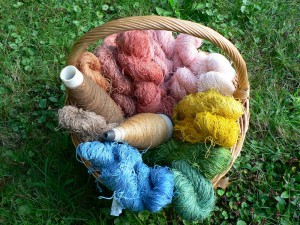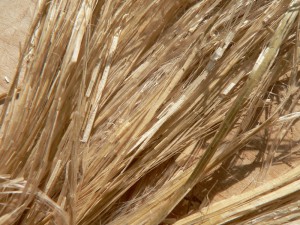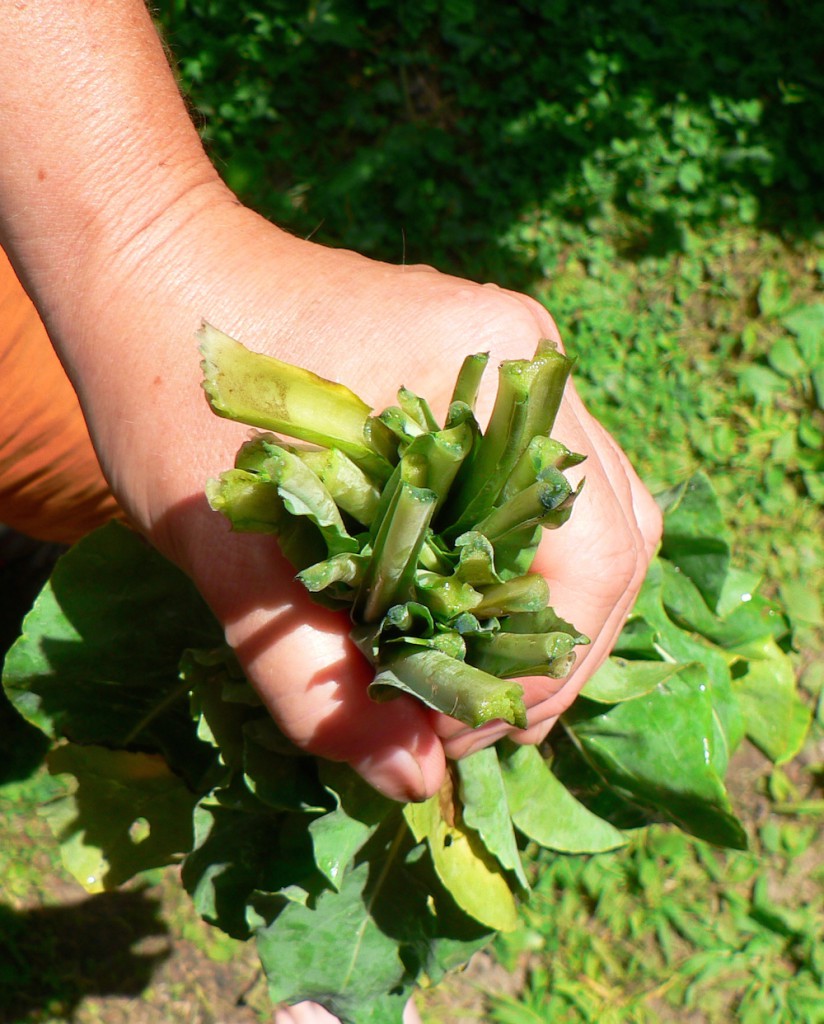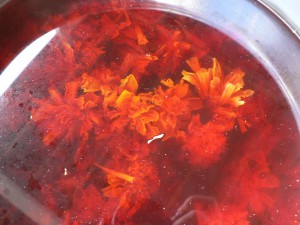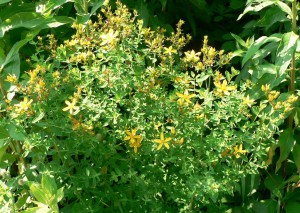Well, today turned out to be a gorgeous day with just a couple showers. No thunderstorms or hail, thank goodness! In this post I’m just going to follow up on the St-John’s-wort dyebath, and show some photos of my set-up in the pavilion at the Cummington Fairgrounds.
First, here are some of the samples I brought to show. In the basket on the left are yarns that are dyed with plants you have to grow or purchase, and which don’t grow wild around here. These include madder, orange cosmos, weld, purple basil, Lady’s bedstraw, and marigolds. In the basket on the right are yarns that are dyed with a woad vat to make blue or green (woad-blue on top of yarns previously dyed yellow). The pinkish colors are from exhausted woad leaves, second year leaves, and my sole attempt at a urine vat.
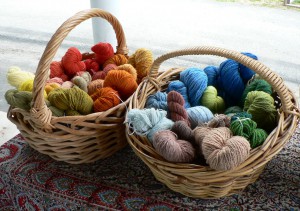
Below is a basket full of colors that can be obtained from wild plants and umbilicate lichen. Wild plants represented here include yarrow, Queen Anne’s lace, goldenrod, tansy, wild mustard, yellow sorrel, sheep’s sorrel, black walnut, St-John’s-wort flowers, poke berries, purple loosestrife, and northern bedstraw. All the pinks are from umbilicate lichen vats.
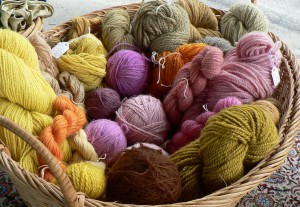
Continue reading “Sunday at Sheep and Wool” →

